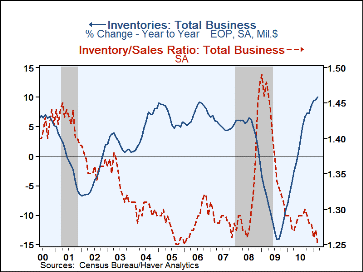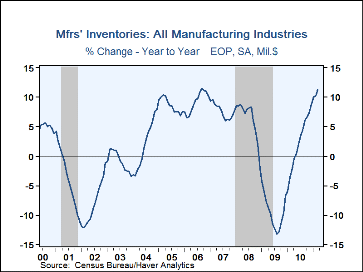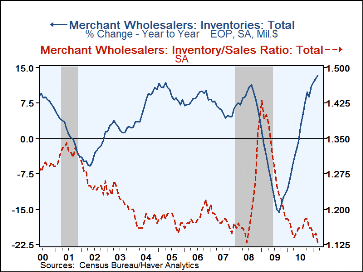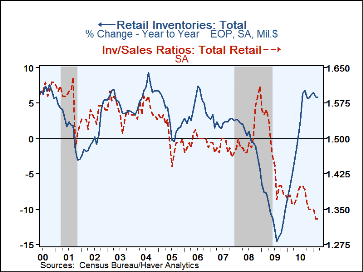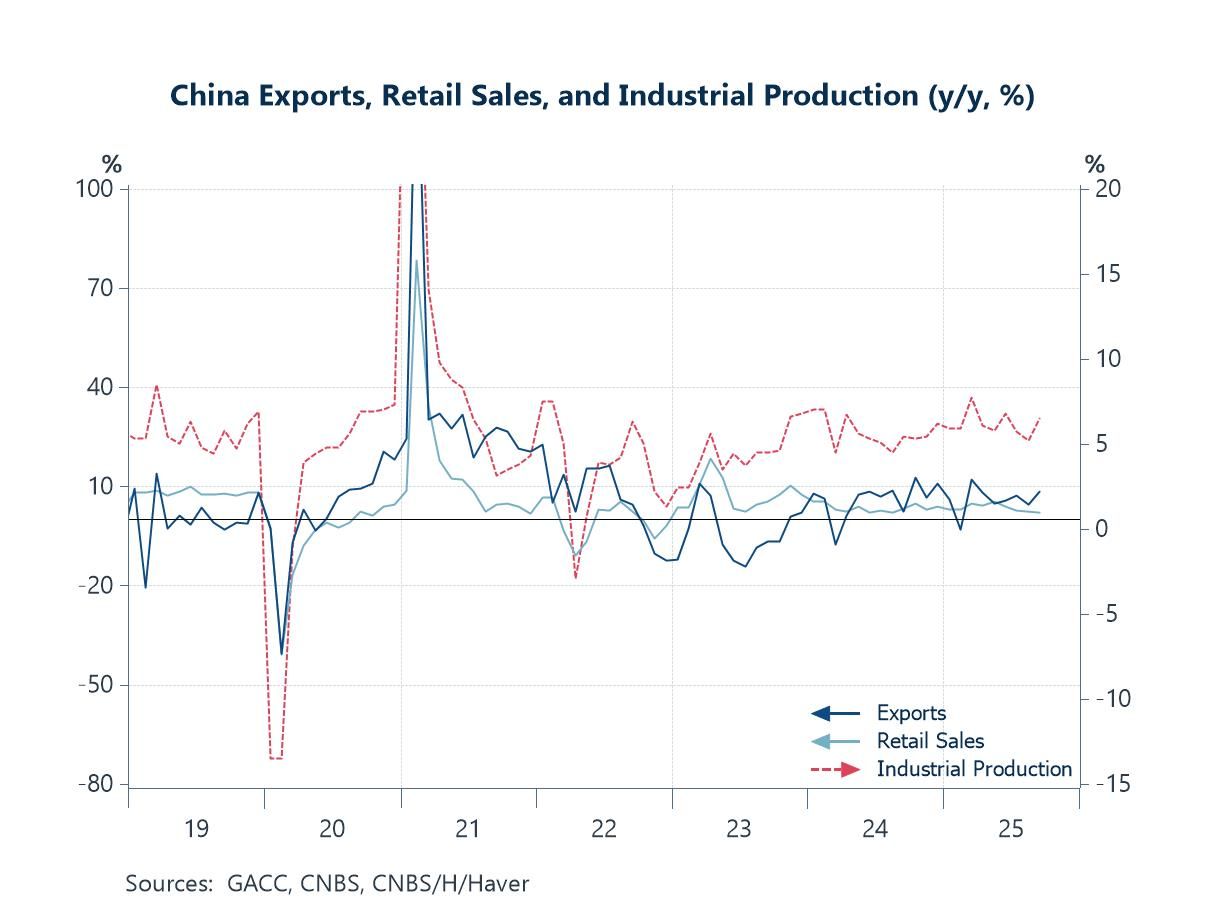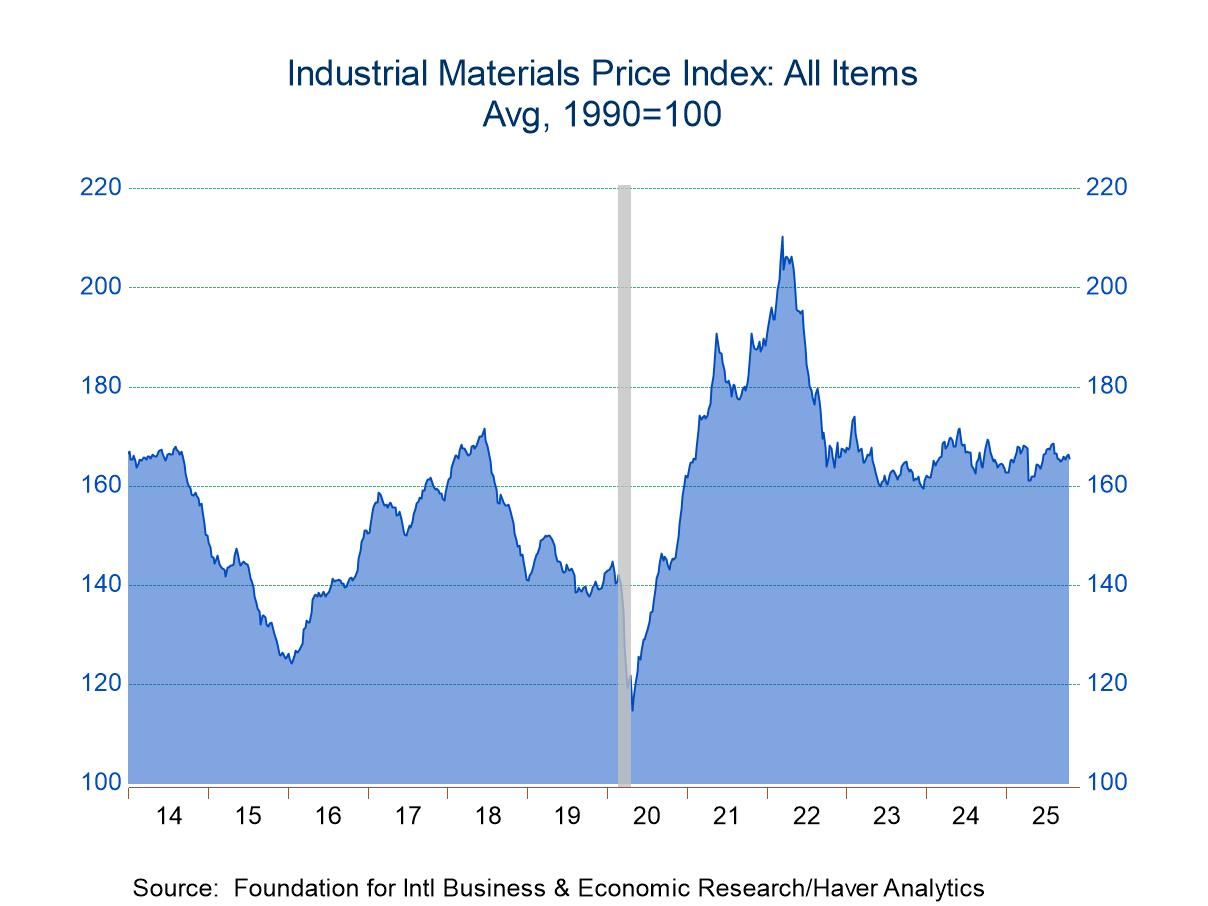 Global| May 13 2011
Global| May 13 2011U.S. Business Inventory Accumulation Accelerates
by:Tom Moeller
|in:Economy in Brief
Summary
The U.S. Commerce Department reported yesterday that business inventories rose 1.0% in March after a revised 0.7% February increase, originally reported as 0.5%. A 0.9% March gain in inventories had been expected by Bloomberg. The [...]
The U.S. Commerce Department reported yesterday that business inventories rose 1.0% in March after a revised 0.7% February increase, originally reported as 0.5%. A 0.9% March gain in inventories had been expected by Bloomberg. The faster rate of inventory accumulation was accompanied by an inventory-to-sales ratio which fell to a record low 1.23 as business sales jumped 2.2% (11.0% y/y).
The March pickup in inventory accumulation was led by a 1.1% rise in the factory sector which roughly equaled the February increase. The strength in inventories was widespread amongst inventories. Durable goods inventories rose 1.4% (11.6% y/y) and nondurables rose 0.8% (8.4% y/y). Factory shipments rose 2.7% (9.9% y/y) led by an 8.2% rise (30.1% y/y) in petroleum refineries.
Wholesale inventories rose a steady 1.1% in March and was paced by a 1.0% rise in petroleum products (22.1% y/y). Less petroleum wholesale inventories still rose 1.1% and increased a strong 12.8% y/y as business activity improved. Wholesale sales jumped 2.9% in March led by a 7.9% rise in petroleum (36.0% y/y). Less petroleum sales rose 2.1% (12.2% y/y).
Retail inventories rose 0.9% after a 0.1% February decline. The gain was paced by a 1.2% increase in autos (9.5% y/y). Excluding autos, inventories rose 0.8% (4.5% y/y). Accumulation during the last year was led by a 6.0% rise in apparel, a 5.8% gain in general merchandise, a 3.9% increase in building materials and a 3.6% gain in furniture and appliance inventories. Just-in-time inventory management lowered the retail inventory-to-sales ratio to a record low 1.33. Less autos, the retail I/S ratio fell to a record low 1.19.
The manufacturing and trade data is in Haver's USECON database. Note that in a value-added feature, the database includes series calculated by Haver database managers showing sales, inventories and I/S ratios for total business less motor vehicle dealers and related wholesale operations.
| Business Inventories (%) | Mar | Feb | Jan | Mar Y/Y | 2010 | 2009 | 2008 |
|---|---|---|---|---|---|---|---|
| Total | 1.0 | 0.7 | 1.0 | 9.7 | 8.4 | -10.0 | -0.7 |
| Retail | 0.9 | -0.1 | 0.4 | 5.9 | 6.1 | -10.0 | -4.4 |
| Retail ex Motor Vehicles | 0.8 | 0.3 | 0.5 | 4.5 | 3.7 | -4.7 | -3.0 |
| Wholesale | 1.1 | 1.0 | 1.0 | 13.3 | 11.0 | -11.8 | 3.7 |
| Manufacturing | 1.1 | 1.0 | 1.5 | 10.3 | 8.3 | -8.8 | -0.8 |
Tom Moeller
AuthorMore in Author Profile »Prior to joining Haver Analytics in 2000, Mr. Moeller worked as the Economist at Chancellor Capital Management from 1985 to 1999. There, he developed comprehensive economic forecasts and interpreted economic data for equity and fixed income portfolio managers. Also at Chancellor, Mr. Moeller worked as an equity analyst and was responsible for researching and rating companies in the economically sensitive automobile and housing industries for investment in Chancellor’s equity portfolio. Prior to joining Chancellor, Mr. Moeller was an Economist at Citibank from 1979 to 1984. He also analyzed pricing behavior in the metals industry for the Council on Wage and Price Stability in Washington, D.C. In 1999, Mr. Moeller received the award for most accurate forecast from the Forecasters' Club of New York. From 1990 to 1992 he was President of the New York Association for Business Economists. Mr. Moeller earned an M.B.A. in Finance from Fordham University, where he graduated in 1987. He holds a Bachelor of Arts in Economics from George Washington University.


